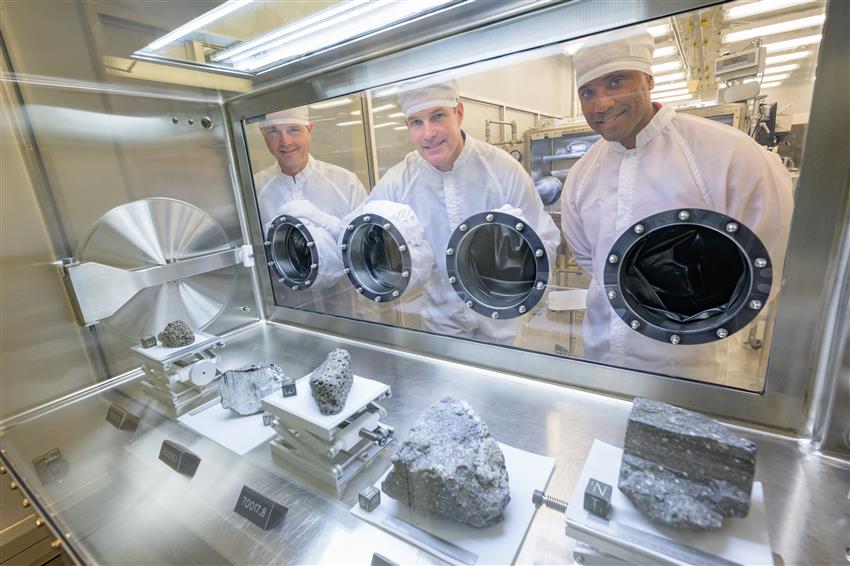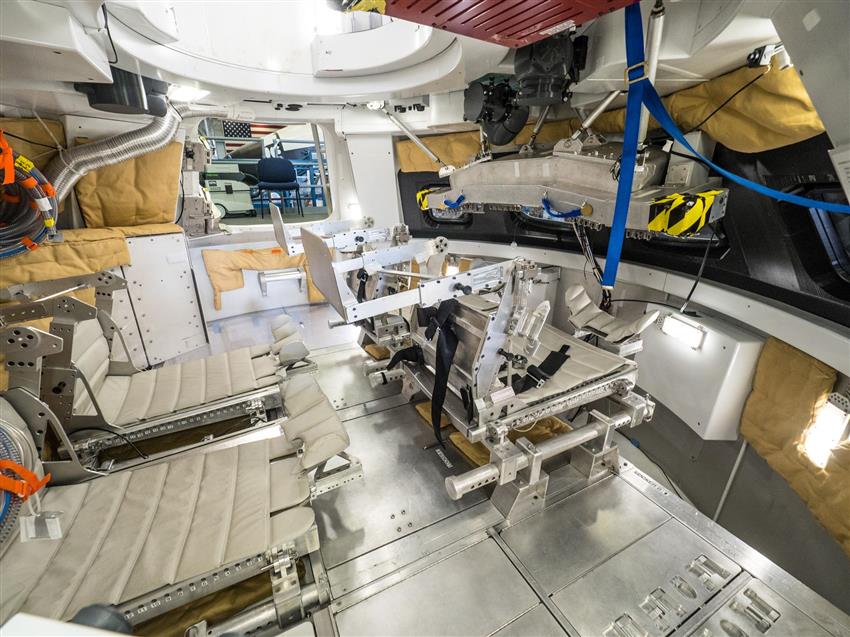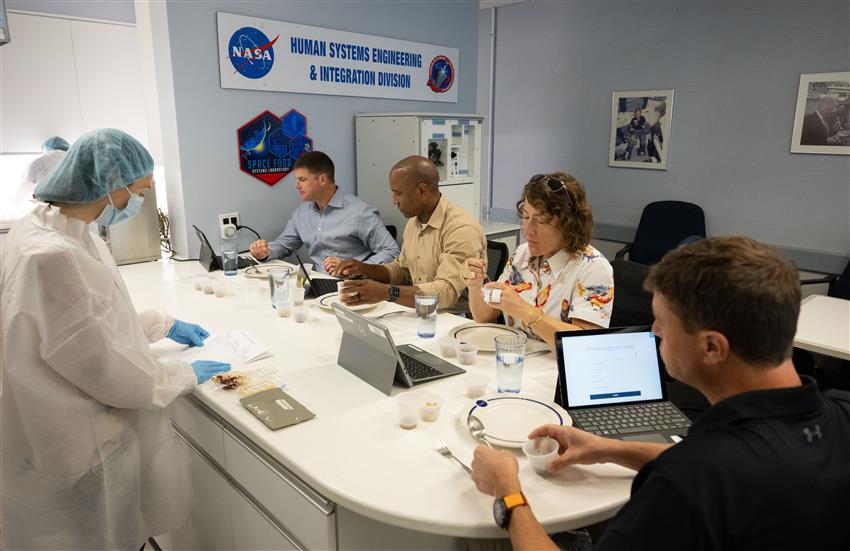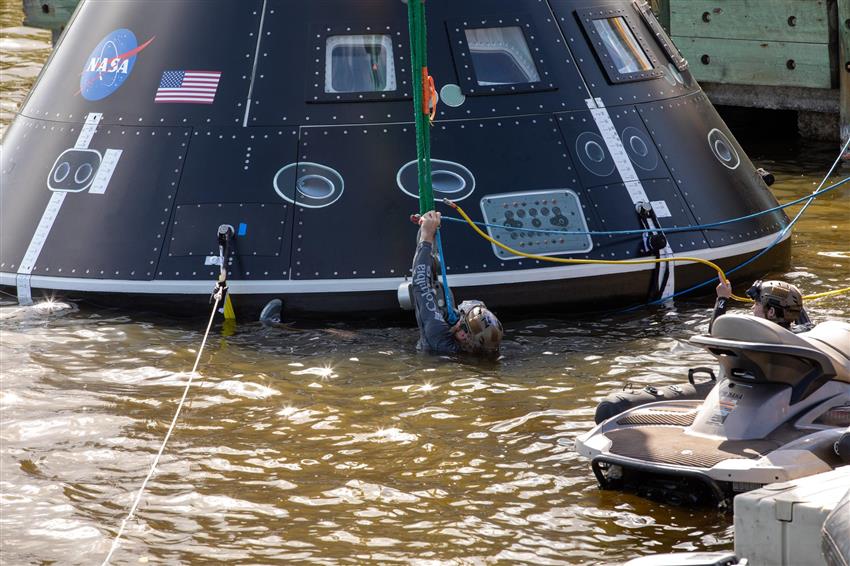Training for a mission to the Moon
In preparation for their 10 days in space, the Artemis II crew officially started training in . All astronauts receive basic training and, once assigned to a flight, they go through mission-specific training. Until recently, the destination for those missions was the International Space Station (ISS). We now have a new destination: the Moon!
But how do you train for a mission around the Moon? The program covers everything for the crew to be successful on their journey to the Moon and back. Since it will be the very first time a crew trains for an Artemis mission, Jeremy and his crewmates will be essential in helping shape the training requirements for future flights.
The training in a nutshell
- When it started:
- Integrated simulations between the crew and Mission Control will start about 12 months before launch
- Where it happens:
- Primary location – NASA's Johnson Space Center, Houston, Texas: Orion simulator, mock-up of the crew module, rocket and spacecraft hardware
- Secondary location – NASA's Kennedy Space Center, Cape Canaveral, Florida: rocket and spacecraft hardware integration, and launch pad and countdown operations
- Other locations based on the type of training
Learning to fly Orion and SLS (Space Launch System)
It will be the first time that humans ride the new rocket system composed of the Orion spacecraft and the SLS, one of the most powerful rockets in the world. The crew will receive detailed lessons on Orion's crew displays, vehicle controls and audio system. They will learn to operate and monitor systems of the spacecraft and rocket for every phase of the mission: from launch and flying to the Moon, to re-entering Earth's atmosphere and splashdown. Here's a summary of what they will train for:
- Launch and early operations
-
- prelaunch operations around the launch pad
- familiarization with the mobile launcher and emergency pad egress operations
- major milestones leading up to and during launch, as well as the first few hours in orbit
- abort scenarios during the ride to space
- rendezvous and proximity operations
- Flying to the Moon
-
- high Earth orbit vehicle testing to better understand Orion's manual piloting qualities and reduce risks for future Artemis missions when Orion docks with the Lunar Gateway or lunar human landing systems
- execution of translunar injection and other burns to manoeuvre the spacecraft
- flying on a lunar trajectory
- solar array operations to provide power to the vehicle
- troubleshooting communications issues
- Atmosphere re-entry and splashdown
-
- overview of the entry timeline and events
- preparation steps taken before entry
- monitoring and execution of entry
- communications with recovery forces
- familiarization with different post-splashdown scenarios they could face as they await recovery on the ocean surface
Living aboard a new vehicle
As part of their training, the crew will also refine their understanding of Orion's systems and how to live in the equivalent of a small camper van for 10 days. This includes how to:
- conduct daily operations
- prepare food
- exercise using a fly wheel
- operate the various life support systems and habitation equipment
Dealing with emergencies
All space missions are risky. Lessons learned are collected after every flight to make the next ones safer and more efficient. The risks are mitigated as much as possible thanks to extensive testing of equipment and procedures on Earth and in space (think Artemis I) as well as training and preparation of both the crew and ground teams. The crew needs to train for any eventuality, learn to troubleshoot various issues that may arise, and respond to different types of emergencies and off-nominal (or abnormal, in non-space terms) scenarios such as:
- medical emergencies and wound care
- water survival
- emergency egress
- communications issues
Getting ready for science
While Orion will not be a fancy lab like the ISS, there will still be opportunities for the crew to conduct science experiments. The astronauts will also use wearable devices to monitor their health and measure radiation levels on Orion.
Planet Earth's magnetic field protects us and astronauts aboard the ISS from a lot of the space radiation. Radiation levels are a bit higher on the ISS than on Earth, but much higher outside of the magnetic field, where the crew of Artemis II will be flying. Extensive testing will be required to keep them and future Moon travellers safe.
Geology training
Being the "test crew,
" Jeremy, Reid, Victor and Christina are helping test procedures and define the training flow not only for their mission, but also for future Artemis missions. As they fly past the Moon, they will be doing some observation and photography, so having good knowledge of lunar geology will help them identify specific features of scientific interest.
In , the Artemis II crewmembers participated in lunar science fundamentals training in the Lunar Sample Laboratory Facilities (aka the Lunar Lab) at NASA's Johnson Space Center. This is where geological samples returned from the Moon by the Apollo lunar surface exploration missions (–) are preserved and studied. The crew talked to the scientists about taking photos of parts of the lunar surface that the Apollo astronauts never saw.
In , Jeremy took part in field geology training with his Artemis II crewmate Christina Koch, his colleague CSA astronaut Jenni Gibbons, Dr. Gordon Osinski and a team from Western University's Institute for Earth and Space Exploration. The expedition took place at Mistastin Lake, which covers part of a crater in Labrador formed by a meteorite impact millions of years ago. This was not Jeremy's first time taking part in this kind of expedition, but it was his first time to a crater known to have rocks similar to those found on the Moon.

Three astronauts wearing clean room suits are seen through the glass of a vault containing lunar rock samples. Left to right: NASA astronaut Reid Wiseman, CSA astronaut Jeremy Hansen, and NASA astronaut Victor Glover, with lunar rock samples during a geology course at NASA's Johnson Space Center in Houston, Texas, on . (Credit: NASA/Robert Markowitz)
Stay tuned for updates on the training of Jeremy and his crewmates!




